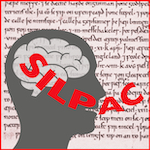M: Mechanisms of Language Acquisition and Change, University of Pennsylvania
Team
Description
The Tolerance Principle (TP; Yang, 2016) is a new and quantitatively precise learning model of how children extract grammatical rules from the linguistic data. Since changes in language use affect the distribution of input available to language learners, which is in turn used by learners to extract the rules of their grammar, when applied to historical data the TP can be used to study the causal process of language change. More specifically, the TP constrains the maximum number of exceptions to a productive linguistic rule. This critical productivity threshold can be mathematically defined. Suppose a rule R be defined over a set of N items in the learner’s input experience. The TP asserts that R is productive if and only if e, the number of items not supporting R, does not exceed θN = N/lnN. From the point of view of a language learner, if a rule is deemed productive, it can be extended to all items in the class and exceptions must be memorized; otherwise, the learner will simply memorize the input items and will not generalize the rule. The numerical condition under the TP, therefore, allows us to establish a predictive account of how a grammatical rule expands or narrows in response to the language learner’s vocabulary acquisition and experience.
The TP provides a viable model for relating input experience to grammatical rules, and for connecting child language acquisition with historical change, and as such is uniquely suited for the SILPAC approach to language change. First and foremost, it provides a mechanism for evaluating how distributional changes in the linguistic input – i.e. which members of a class of lexical items learners are primarily exposed to – may lead to more fundamental changes in the productive rules of grammar which are acquired. Second, the TP operates effectively on a small vocabulary of fairly common words, modeling the child’s ability to learn languages very early and accurately. Third, by defining a single threshold value for productivity defined over the proportion of rule-following items, the TP gives consistent results across variable datasets, reflecting the fact that the variable developmental paths taken by individual child language learners do not affect the end state of the grammar acquired. Finally, although it is far from straightforward to estimate the vocabulary of language learners in the past, there is already evidence that the vocabulary appropriate for child language acquisition can be approximated by constructing samples from corpora of many other varieties. Kodner (2019) finds that the type frequencies of morphophonological and syntactic-semantic patterns have similar distributions across child-directed, adult-directed, written, as well as historical corpora—when only high-token frequency items are included, which is precisely the kind that form young children’s vocabulary. In particular, Kodner shows that the historical corpora of Latin (Perseus: Smith et al. 2000) and the securely reconstructed Proto-Germanic verbs (Seebold 1970) can be bootstrapped to yield similar distributions to those in present-day Spanish- and German-learning children’s vocabulary. Trips & Rainsford (submitted) use such ‘frequency trimmed’ data from historical corpora to apply the TP to evaluate the productive rules of argument structure for the class of Middle English psych verbs. PB3 will apply and develop this approach.
